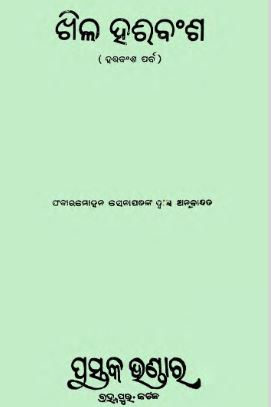In the rich and diverse tapestry of Odia literature, Fakiramohan Senapati holds a revered place. Known primarily for his contributions to Odia fiction, Senapati’s work also extends into the realm of poetry, most notably with his exceptional epic translation “Khila Haribansa – Haribansa Parba.” Originally published in 1902 and subsequently reprinted in 1985, this work represents a milestone in the Odia literary canon.
“Khila Haribansa – Haribansa Parba” is an illustrious retelling of the ancient Sanskrit text, the “Harivamsa.” This epic, devoted to Lord Krishna’s life and deeds, supplements the Mahabharata and explores his divine exploits in greater detail. Fakiramohan Senapati’s translation into Odia offers an accessible yet profoundly poetic narrative that has captivated readers for generations.
The narrative of “Haribansa Parba” unfolds in three sections: the Harivamsa Parva, the Vishnu Parva, and the Bhavishya Parva. This tripartite structure delves into the genealogies of gods and heroes, recounts Lord Krishna’s early life and later accomplishments, and provides prophecies concerning future events, making it not just an epic but a cosmological chronicle.
Fakiramohan Senapati, often hailed as the father of Odia fiction, brings his lyrical prowess and profound understanding of Odia culture to this translation. Translating such a significant text demanded not just linguistic fluency but also an emotional and spiritual alignment with the source material. Senapati’s rendition is noted for retaining the grandeur of the original while infusing it with a uniquely Odia essence. This balance between faithfulness to the source and cultural adaptation has made “Khila Haribansa – Haribansa Parba” an enduring work of poetic art.
Central to “Haribansa Parba” is the divine figure of Srikrusna (Krishna), whose multifaceted character is beautifully rendered by Senapati. Krishna is portrayed not only as a god but as a beloved character embodying various roles – a mischievous child, a valiant hero, an astute statesman, and an enchanting lover. Senapati’s portrayal resonates deeply within the Odia cultural and religious landscape, bridging the divine and the human, thus making the epic accessible and relatable to the reader.
First published in 1902, Senapati’s “Khila Haribansa – Haribansa Parba” found renewed interest with its 1985 reprint, reflecting its timeless appeal. Both in print editions have facilitated the transmission of this epic across generations, preserving the spiritual and literary heritage of Odisha.
The translation has played a pivotal role in shaping Odia literary identity, offering readers an opportunity to engage profoundly with their literary and cultural traditions. It stands as a testament to the power of translation in enriching a language’s literary repertoire, opening a window to mythological and epic narratives that might otherwise remain inaccessible.
“Khila Haribansa – Haribansa Parba” by Fakiramohan Senapati stands as a monumental work within the Odia literary tradition. It is not just a translation but a cultural and poetic reimagining of the epic life of Lord Krishna. As we continue to explore and appreciate Odia poetry, Senapati’s masterful adaptation remains a cornerstone, illuminating the depths of our spiritual and cultural consciousness. Reprinted in 1985, this work continues to be a beacon of Odia literature, inviting both old and new generations to revel in its epic splendor.
Books Info
| Books name | Khila Haribansa – Haribansa Parba/ଖିଳ ହରିବଂଶ |
| Editor | Fakiramohan Senapati, Tr. |
| No Of pages | 229 |
| Publisher | Anarapurnna Publishers |
| Publication | 1902, 1985, rp. |
| Printed At | Anarapurnna Printers |
| Distributor | NA |

